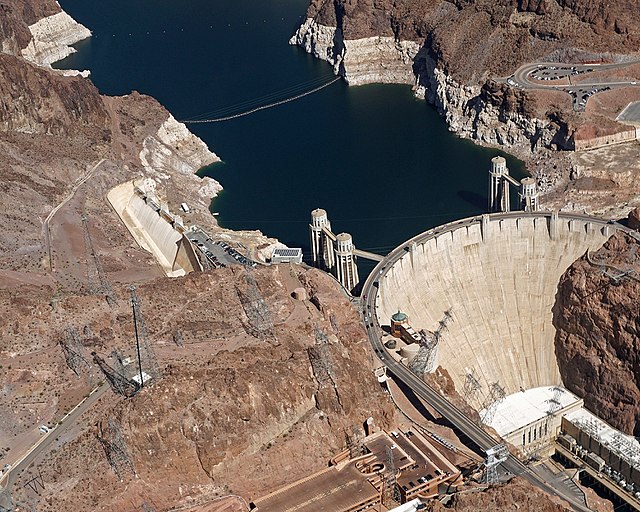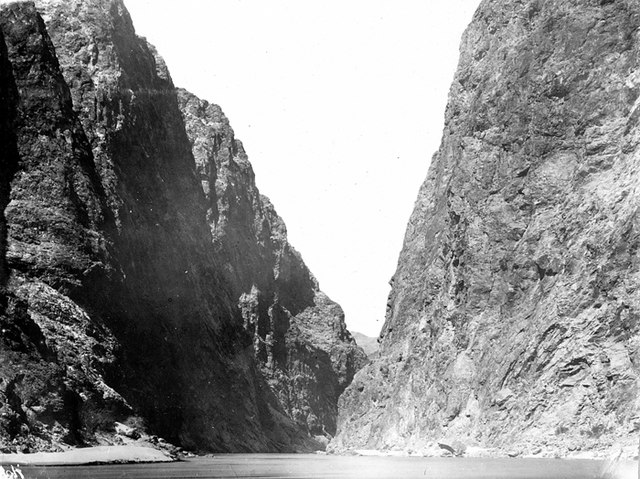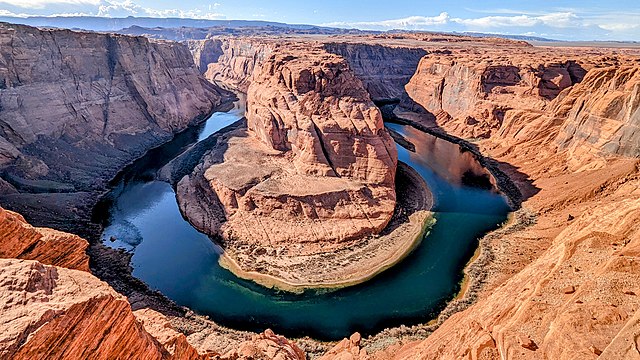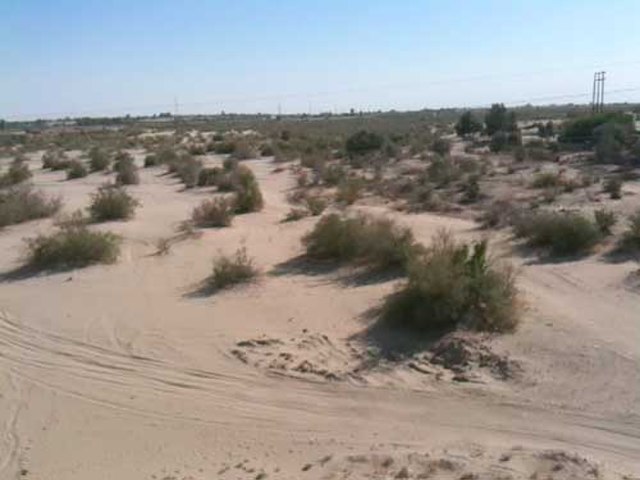Hoover Dam is a concrete arch-gravity dam in the Black Canyon of the Colorado River, on the border between the U.S. states of Nevada and Arizona. Constructed between 1931 and 1936, during the Great Depression, it was dedicated on September 30, 1935, by President Franklin D. Roosevelt. Its construction was the result of a massive effort involving thousands of workers, and cost over 100 lives. In bills passed by Congress during its construction, it was referred to as the Hoover Dam, after President Herbert Hoover, but was named the Boulder Dam by the Roosevelt administration. In 1947, the name Hoover Dam was restored by Congress.
Hoover Dam by Ansel Adams, 1941
Image: 2017 Aerial view Hoover Dam 4774
River view of the future dam site, c. 1904
Sketch of the proposed dam site and reservoir, c. 1921
The Colorado River is one of the principal rivers in the Southwestern United States and in northern Mexico. The 1,450-mile-long (2,330 km) river, the 5th longest in the United States, drains an expansive, arid watershed that encompasses parts of seven U.S. states and two Mexican states. The name Colorado derives from the Spanish language for "colored reddish" due to its heavy silt load. Starting in the central Rocky Mountains of Colorado, it flows generally southwest across the Colorado Plateau and through the Grand Canyon before reaching Lake Mead on the Arizona–Nevada border, where it turns south toward the international border. After entering Mexico, the Colorado approaches the mostly dry Colorado River Delta at the tip of the Gulf of California between Baja California and Sonora.
The Colorado River at Horseshoe Bend, Arizona, a few miles below Glen Canyon Dam
Headwaters of the Colorado River in Rocky Mountain National Park, Colorado
Colorado River in the Grand Canyon seen from Pima Point, near Hermit's Rest
Colorado River as it exits the United States into Mexico beneath the San Luis Colorado-Colonia Miguel Aléman Bridge (September 2009)








